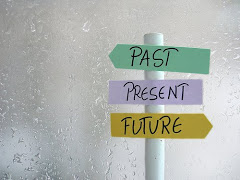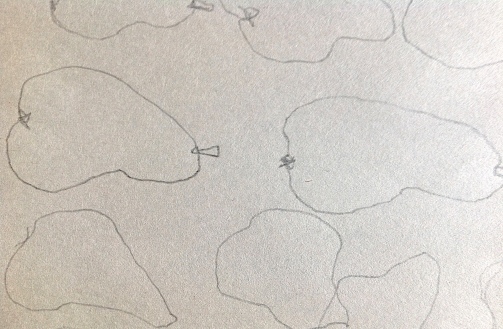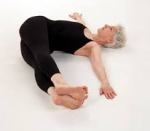 Did you do it? You can still do it you know? You can start right now or you can wait.
Did you do it? You can still do it you know? You can start right now or you can wait.
It’s been 10 weeks of 5 minutes doing one Yin yoga posture most days of the week at home. I am surprised how much I learned from just 5 minutes! I missed a few here and there but for the most part I did it. If you didn’t take part in our 10 week journey these personal notes may be lengthy and won’t really resonate – come back and read after you have taken the 5 Minute Home Yin yoga challenge.
I’d love to hear more from you, about your reflections and insights during the two and half months – go ahead start typing below! And just a little do over comment: I would preferred to have shared my reflections week by week – this summary below is a bit cumbersome and well – honestly, too much to read at once – even for me. That’s life. Seems to be how I learn, one drop at a time!
5 x 5 x 10: My Personal Notes
Week 1. Relaxation
Learning: Still the most nourishing posture for me to relax an active nervous system and cultivate natural awareness; to let go of thinking. In his book, Light on Life, B.K.S.Iyengar says, “Savasana (Relaxation Pose) is being without was, being without will be. It is being without anyone who is.”
Reflection: What wisdom did this pose reveal for me today? “Trust yourself, guidance is here.,” “Abide here anytime no matter where you are.”, “Love everything the same.” Just a few of the w h i s p e r s the Goddess of wisdom gave me.
Week 2. Butterfly
Learning: Cautiousness or shall I say unconscious fear and guarding arise in this posture for me. Having had back issues over the years I find unless I gradually and fully relax all my spinal related muscles, there’s risk of holding tension there and straining my low back and neck. That said, maybe I need to come out a bit or place my support higher when using it – start with head on seat of chair, and go down from there…a wise idea!
Reflection: What is my state of being before and after the pose? Before – outward, zoom-lensed focused. After – inward wide-lensed focused.
Week 3. Sphinx and Seal
Learning: This pose is still my savior before, during and after “back issues”. But this week I payed attention to the connection between my throat and the spine when doing Seal. I feel restriction and discomfort in what I think is my throat chakra area. Hmm, this area is said to be related to will and being true to yourself in your self expression. (Pause) Yes that is true. I often put the white flag up to Fear and just follow it like a wet noodle. (It’s getting hot in here. I feel a wave of vulnerability coming on and Yes I watched the Brene Brown vulnerability video!) But seriously, being honest and authentic with myself and with others is important. I want that . So I will be doing more Self-inquiry and Seal posture after this thing is over.
Reflection: What am I holding on to? A sense of personal power, pride, “I want to be somebody special” feeling. That belief takes way too much work. And if I look underneath it, what I really want is to put that down and be what I am- whatever way it comes out.
Week 4. Shoelace
Learning: Pain is sweet! No I’m serious. The outer hip discomfort is one of the great training grounds for stretching my capacity to be with borderline pain and I’m a whiner so learning to mindfully be with discomfort – that’s a good thing for me.
Reflection: Where is patience; how does it show up in my life? It shows up when I surrender the inner critic, when I slow down my thoughts and actions, when I am loving and caring and when I am present in the moment. (Wow that was clear!)
Week 5. Swan
Learning: I seem to strive in this posture and want it to “look” good. (Vulnerability again and even Shame!) Only when I can close my eyes or take Sleeping Swan do I find the muscles in my hips and back and my sense of self-image let go.
Reflection: Notice your change in mood – Nothing – absolutely didn’t notice anything – disappointing but I’m OK with it. Q to self: Am I not fully opening up to what the pose has to reveal to me?
Week 6. Toe Squat to Hero
Learning: Toe squats are not meant to be held for 5 minutes! That’s the truth. Hero – I see why this is a meditation pose as my knees and ankles are opening, my pelvis can sit perfectly neutral and the spine can rise up in its natural curves. No back aches. So calming for the mind-body.
Reflection: How do I know what’s appropriate for me in a pose or in my life? Wait for the deeper inner signals to tell me. When I get “hooked” on the first bait of sensation or thought – “this is great”, “this is too much”, “I should do this”, “I want … I go down a path of “dukkha” or disatisfaction. If I wait a bit, breathe, let the winds of body-mind pass, I can discern better the wise, eternal, inner voice from the egoic, temporary voice. … I want to practice that more.
Week 7. Saddle
Learning: I love this pose I mean I love what it does to me: Opens me up and encourages loving energy
Reflection: What would my life look like if I opened up like this, especially when the impulse is to close? Tenderness, kindness toward myself and then toward others. I would probably listen more and talk less. Joy and happiness being less conditional and more inherent. Love would lead and fear would follow. The illusion of “I can’t” becomes the reality of “we can”.
Week 8. Straddle/Dragonfly
Learning: I’m really aware of the earth in this posture, the earth as my body. As for the spine, unlike Butterfly, surrender here is less risky. I feel safer. I’m aware of my architecture – my bones and how they support this body, I’m grateful for my legs, that I have two and they are healthy for me to walk and run.
Reflection: What area in my life is asking for your acceptance? The inner Goddess of Wisdom and Creativity. I keep thinking “I” have to make the choice, “I” have to be creative. Yet when “I” mind is quiet, it is clear that the wisdom for choice and the inspiration to create are already present. But like I found out in week #7, I’m not always open to it, I close my own doors. What a gift this week is to remind me of this!
Week 9. Reclined Twist
Learning and Reflection: What does scanning your body tell me during this pose? My left side of my body feels tighter; how freeing it is to be able to turn my head; twists help me focus and clear my head. Note to myself – do more twisting!
Week 10. Meditation
Learning: I practiced my 5 minutes of breathing awareness with a block under my shoulder blades and one for my head. This opening in my chest area was a friendly way to start the rest of my mediation practice. Before this week I never tried meditation that way. I’m glad I listened to my inner self!
Reflection: How does it effect the rest of my day? It is a reminder to come back to this breath, to right here. And in that vast, soft space of presence, I see clearly that there is room for everything. The “I me mine” can dance freely. I can welcome and respond to whatever arises in my experience from a wider, wiser, kinder perspective.









